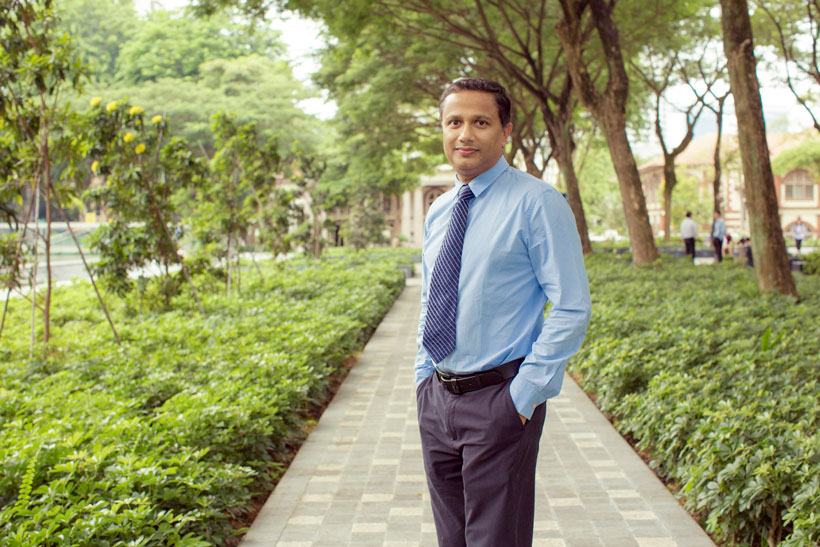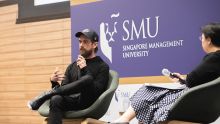
The NRF Investigatorship grant will support SMU Professor Archan Misra’s vision of a smart city where humans and devices work collaboratively on projects.
SMU Professor Archan Misra has received a National Research Foundation (NRF) Investigatorship grant to develop new capabilities in ultra-low power sensing and embedded machine intelligence, which can catalyse innovative applications in smart cities, factories and buildings.
The biggest limitation to the large-scale deployment of Internet of thing (IoT) devices in Singapore, or across the world, is the relatively high energy consumption required for sensing and sense-making. While battery replacement may not appear to be a big deal today, it is a prohibitive bottleneck in Professor Misra’s vision of a smart city – a future where tens of thousands of such sensors and IoT devices deployed across each individual shopping mall, college campus and factory floor.
“Devices deployed along city sidewalks, shopping malls or even on campuses today need a battery-based power source, which must be replenished every 6 to 12 months. This problem will only get more acute, as sense-making logic increasingly involves executing deep neural network-based processing, which have much higher computational complexity,” Professor Misra said.
To usher in an era of truly sustainable pervasive sensing, Professor Misra is embarking on a new project, titled ‘C2SEA: Coordinated Cyber-physical Sensing & Edge Analytics’, which was funded in the recent 5th NRF Investigatorship Call. Professor Misra plans to use wearable and IoT devices for sensing and in-situ computing capabilities, while also radically reducing the energy consumption overheads these activities require.
One possible application of Professor Misra’s research is a smart factory, where human workers collaborate with assistive robots on the manufacturing floor. Here, a worker might be wearing battery-less devices such as protective goggles and wearable patches, while the factory walls and equipment might be fitted with sensors such as short-range radar or ultra-low power cameras.
“When the worker issues a spoken command to retrieve an object, while also gesturing in its direction, not only would the robot precisely understand the intent of the worker and retrieve the right tool, all of this sense-making is happening in near real-time, using ultra-low energy or battery-less devices,” he said.
The key to this battery-less operation is threefold: first, the devices ‘sleep’ most of the time and are woken up only for a relevant activity; second, the devices are charged through energy harvesting from natural sources such as ambient light and wireless transmissions. Finally, to overcome resource limitations linked to low computing power, the devices will harness their collective sense-making power and distribute complex sense-making algorithms across themselves.
“The big picture is to offer the capabilities of fine-grained sensing of human activities such as voice and gestures in real-time, but with a targeted 100-fold or greater reduction in energy consumption. By solving these challenges, my research will enable new forms of symbiotic and intelligent man-machine interactions and give rise to new applications in telepresence, augmented reality and collaborative robotics,” Professor Misra said.
Written by Juliana Chan. This article was first published by SMU Office of Research & Tech Transfer in Research@SMU May 2019 Issue.



